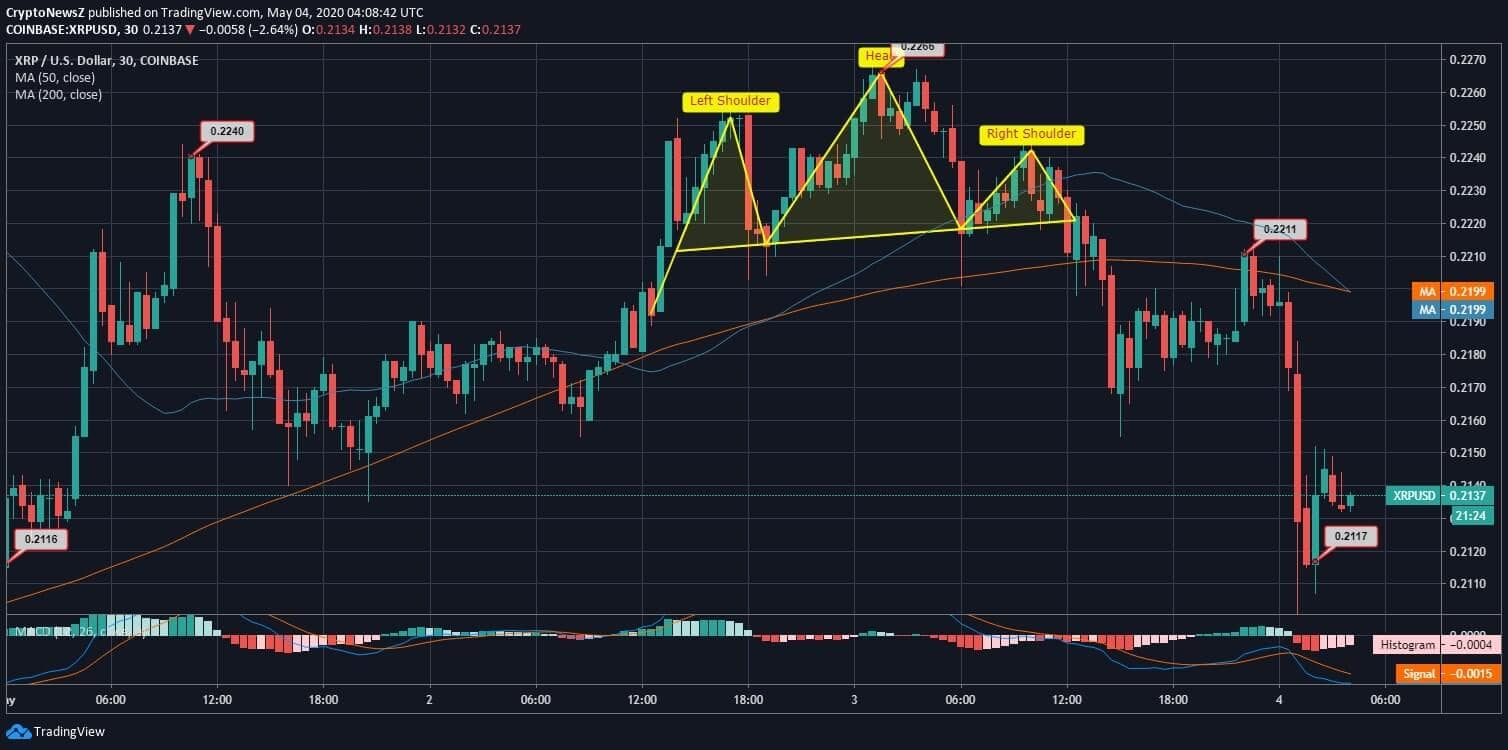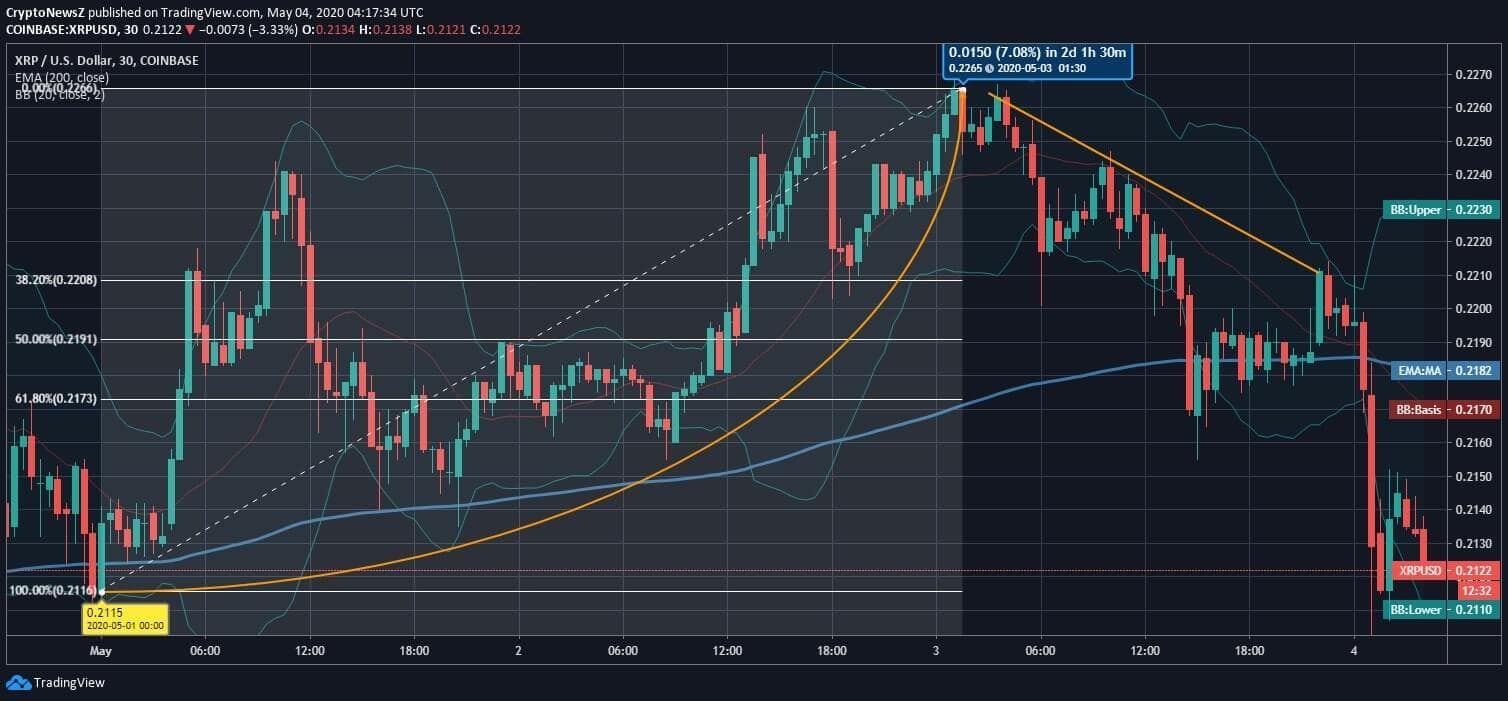This content has been archived. It may no longer be relevant.
Apparently, the crypto market is going to see the third volatile month in a row. The still ongoing pandemic has disarrayed many economies in the last few months, and in this state, cryptocurrencies were anticipated to hold some balance. Despite the fact that the top coins have tried to drift the market upside, bearish attacks remained persistent.
Ripple price trend went up at the end of April month, rising above $0.23 with a strong bullish outlook. However, the consequences were not that impressive. Once the coin corrected down from $0.2350, it has not been able to hit the $0.23 price mark again.
The XRP coin has opened the current month at $0.2115 while a large part of the world is still under lockdown. A few countries have partially lifted the lockdown, and such steps were also expected to impact the market positively.
Advertisement
Notably, the market is attempting to move upwards, but the bearish pull seems stronger. XRP is likely to survive out of this scenario. Some of a few significant names of financial space, Commonwealth Bank, ANZ and Westpac have declared that they are looking to utilize the payment technology by Ripple; the testings are going on for the same.
XRP Price Analysis
For the first two days of May, XRP depicts a clear uptrend reaching above $0.22. Here, it has also formed a head and shoulder pattern, after which the coin saw a gradual pullback with lower highs. The coin has knocked the price range above $0.22 four times over the last few days.

Here, the XRP price is struggling to bounce back above $0.22 by now. Meanwhile, it is witnessing a bearish crossover of its moving averages. The MACD indicator for the same is also in the negative zone.
Related: Check out XRP Coin Price Prediction
Advertisement
The recently formed bearish trendline may remain intact if the currency doesn’t rebound soon enough. The more than 7% price hike has now come back to square one while the coin is trading below the 200-day EMA line. XRP is still largely vulnerable to further volatility, according to the Bollinger bands.








